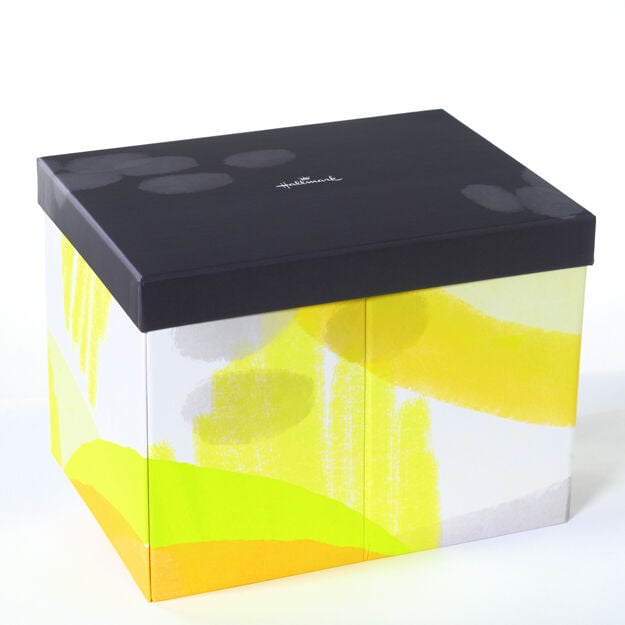Maximizing ROI with Direct Mail: Three Lessons from Successful Medicare Advantage Campaigns

Connecting in a Dynamic Marketplace
The healthcare industry is evolving, offering unprecedented opportunities for Medicare Advantage (MA) plans to connect with their members in meaningful ways. In 2024, over half of eligible Medicare beneficiaries—32.8 million out of 61.2 million enrolled in Medicare Parts A and B—are choosing Medicare Advantage plans. With enrollment rising by 2.1 million beneficiaries (a 7% increase from 2023), the demand for innovative, personalized approaches has never been higher. Health plans are finding ways to stand out—not just during the Annual Election Period (AEP), but throughout the entire member lifecycle, addressing the needs of this rapidly expanding market.
Return on investment (ROI) is a vital metric for evaluating these strategies, but for Medicare Advantage plans, ROI encompasses more than financial gains. It reflects the ability to enhance member satisfaction, improve retention rates, and positively influence key metrics like Stars, CAHPS, HOS, HEDIS—critical factors in how plans are evaluated and compensated by the Centers for Medicare & Medicaid Services (CMS). High-performing plans are rewarded not only with bonus payments but also with greater member loyalty and market share.
Direct mail is emerging as a standout strategy, offering a powerful blend of personalization, trust, and measurable impact. In 2024, an LOB and Compermedia report stated that 84% of marketers report that direct mail gives the highest ROI of any channel they use. By integrating direct mail with data-driven digital insights, health plans can create highly targeted campaigns that resonate with members and maximize ROI. Let’s explore the unique advantages of direct mail, its proven effectiveness, and actionable strategies to elevate member engagement.

Three Reasons Why Direct Mail Excels in Driving ROI
Direct mail continues to be one of the most effective tools for health plans looking to engage Medicare Advantage (MA) members and achieve measurable outcomes. By offering a tangible, personalized approach that resonates deeply with seniors, direct mail delivers strong return on investment (ROI). Here’s why it works:
Longevity and Engagement: A Winning Combination
Direct mail commands attention in ways few channels can. While emails and online ads often fade quickly from memory, direct mail lingers, creating multiple opportunities for engagement. In fact, a white paper by WARC reports that direct mail achieves an average engagement rate of 95%, far surpassing digital alternatives. Additionally, studies show that a piece of direct mail remains in a household for an average of 17 days, compared to the fleeting lifespan of an email. This extended presence ensures members interact with the content repeatedly, giving health plans more chances to communicate essential benefits, offer reminders, or share important updates.
For seniors, direct mail provides the time and space to absorb healthcare information. According to Lob’s 2023 report, Medicare-eligible recipients spend an average of 7 minutes per day sorting and reading their mail—time that can be invaluable for building familiarity and trust with a health plan’s messaging.
Trust and Emotional Resonance: Building Member Connections
Direct mail stands out as a trusted and emotionally impactful communication channel. Research from Epsilon reveals that 76% of consumers trust direct mail when making decisions, a level of credibility that digital channels often struggle to achieve. For seniors navigating important healthcare choices, this trust is key to building confidence in their health plan.
Beyond trust, direct mail fosters emotional resonance. A personalized Hallmark card, for example, delivers more than just information—it conveys care and attention in a way that strengthens member relationships. Whether it’s a wellness reminder or a simple expression of gratitude, these gestures create positive associations with the health plan and leave a lasting impression.
Precision and Personalization: Reaching Members Effectively
The true power of direct mail lies in its ability to leverage data for highly personalized and targeted outreach. Health plans can use member demographics, engagement history, and healthcare needs to craft messages that feel relevant and timely. Personalization also optimizes costs, as resources are focused on highly effective, relevant campaigns rather than broad, generalized mailings. By combining precision with a personal touch, direct mail campaigns consistently deliver strong ROI, making them a vital part of any member engagement strategy. This approach ensures that members see value in the communication, making them more likely to take action.
For instance, health plans might identify members due for preventive care screenings or managing chronic conditions and send tailored messages encouraging them to act. One regional health plan saw mammogram completion rates increase from 5% to 44% by replacing standard letters with personalized Hallmark cards. The campaign’s success highlights how targeted, thoughtful communication can drive meaningful results.
Three Real-Life Success Stories: Direct Mail in Action
Below are three real-world examples that showcase the measurable ROI and transformative potential of well-executed direct mail campaigns.

1. Enhanced Member Retention with Thanksgiving Gratitude
During the Annual Election Period (AEP), retaining members is a top priority for Medicare Advantage plans, especially as members consider switching plans. A national Medicare Advantage plan partnered with Hallmark Business Connections to send personalized Thanksgiving cards that expressed gratitude and highlighted the plan’s commitment to its members.
Result: These thoughtfully timed cards, delivered before the peak AEP shopping period (November 15 to December 5), achieved a 16% higher retention rate among recipients compared to non-recipients. By fostering a sense of connection and care, the campaign significantly reduced the costs of member churn. This example underscores how gratitude-driven communications can be a strategic tool for driving loyalty during critical periods.

2. Boosting CAHPS Scores Through Strategic Engagement
Member satisfaction plays a pivotal role in CAHPS scores, which directly influences a plan’s Star Ratings and bonus payments. A Medicare Advantage plan launched a direct mail campaign using personalized Hallmark cards to reinforce its commitment to care and support. The campaign was strategically timed to coincide with the CAHPS survey period, ensuring a positive impression when it mattered most.
Result: The campaign improved 8 out of 9 CAHPS measures, demonstrating how personalized, well-timed outreach can shape member perceptions. This success translated to higher Star Ratings, unlocking additional CMS bonus payments and enhancing the plan’s competitive positioning. This case highlights the dual value of direct mail: enhancing member satisfaction and delivering financial returns.

3. Celebrating Birthdays to Strengthen Member Connections
Recognizing the emotional impact of personalized communications, Hallmark Business Connections enables health plans to send birthday cards to members for as little as $1 per card. While simple, these heartfelt gestures foster emotional connection and remind members of the plan’s commitment to their well-being.
Result: Health plans have reported overwhelmingly positive feedback from members who received these birthday cards. Recipients often express their gratitude through letters, calls, and even greeting cards of their own, sharing sentiments like:
“This is the only birthday card I received this year, and it means a lot!”
“Yesterday was a long day, but in the middle of it I received the Hallmark card and was so touched it brought tears to my eyes.”
These interactions contribute to measurable business outcomes, including higher Net Promoter Scores (NPS) and increased retention rates. For a low cost, these personalized touchpoints create lasting value for members and the health plans that serve them.
The Takeaway
These examples illustrate how direct mail can generate measurable outcomes that extend well beyond the immediate campaign. By improving retention rates and satisfaction scores, health plans can reduce churn-related costs, strengthen their revenue streams through higher Star Ratings, and build deeper connections with members. Personalized direct mail remains a cornerstone of successful member engagement strategies, delivering the tangible ROI that health plans need in today’s competitive market.

Five Lessons for Health Plans: Strategies to Maximize ROI with Direct Mail
1. Prioritize Timing and Relevance
Direct mail works best when it arrives at the right moment. Send personalized communications tied to key member milestones, like birthdays, or align with pivotal healthcare decisions. For example, reaching out with wellness reminders early in the year or during the CAHPS survey period ensures your messages are both timely and impactful.
2. Leverage Data to Drive Personalization
The key to maximizing ROI lies in crafting messages that resonate. Use member demographics, engagement histories, or claims data to create highly targeted campaigns. For instance, identifying members due for preventive screenings and sending tailored Hallmark cards can drive action, as seen with the 39% mammogram completion increase achieved by one health plan.
3. Be Consistent with Year-Round Touchpoints
Develop a calendar of direct mail touchpoints to keep members engaged throughout the year. Consider birthday cards, wellness reminders, or seasonal greetings to maintain ongoing connections and demonstrate consistent care.
4. Combine Physical with Digital for Maximum Reach
Amplify the impact of direct mail by integrating it with digital tools. Include QR codes, personalized URLs (PURLs), or app links in your mailings to seamlessly guide members to online resources or scheduling portals. This approach enhances accessibility and allows for easy tracking of member interactions.
5. Measure, Refine, and Optimize
Use unique tracking mechanisms like QR codes or feedback surveys to measure engagement, response rates, and satisfaction. Analyze the data to refine future campaigns and demonstrate measurable ROI, ensuring your strategy evolves with member needs and preferences.
These lessons emphasize the power of a thoughtful, data-driven approach to direct mail. By integrating these strategies, health plans can drive engagement, foster loyalty, and achieve tangible business outcomes while ensuring members feel valued and supported.
Unlocking ROI Through Direct Mail
For Medicare Advantage plans, achieving measurable ROI is about more than financial gains—it’s about building trust, improving satisfaction, and driving long-term retention. Direct mail offers a proven path to these outcomes, delivering personalization, emotional connection, and actionable results that resonate with members.
By adopting strategies like precise targeting, lifecycle messaging, and timely engagement, health plans can transform their direct mail efforts into high-impact campaigns that deliver tangible returns.
Ready to maximize your ROI? Check out our whitepaper, Revitalizing Medicare Advantage Member Engagement with Direct Mail, to explore more success stories, proven strategies, and insights on how Hallmark Business Connections can help your health plan achieve its goals.
Want to learn more?
Interested in learning how Hallmark greeting cards can improve your member experience, deliver strong marketing ROI, impact member loyalty and drive better engagement? Fill out the form below to consult with our team of experts.
In this Article
-
Connecting in a Dynamic Marketplace
-
Three Reasons Why Direct Mail Excels in Driving ROI
-
Three Real-Life Success Stories: Direct Mail in Action
-
The Takeaway
-
Five Lessons for Health Plans: Strategies to Maximize ROI with Direct Mail
-
Unlocking ROI Through Direct Mail
-
Want to learn more?
Products
Similar Articles







